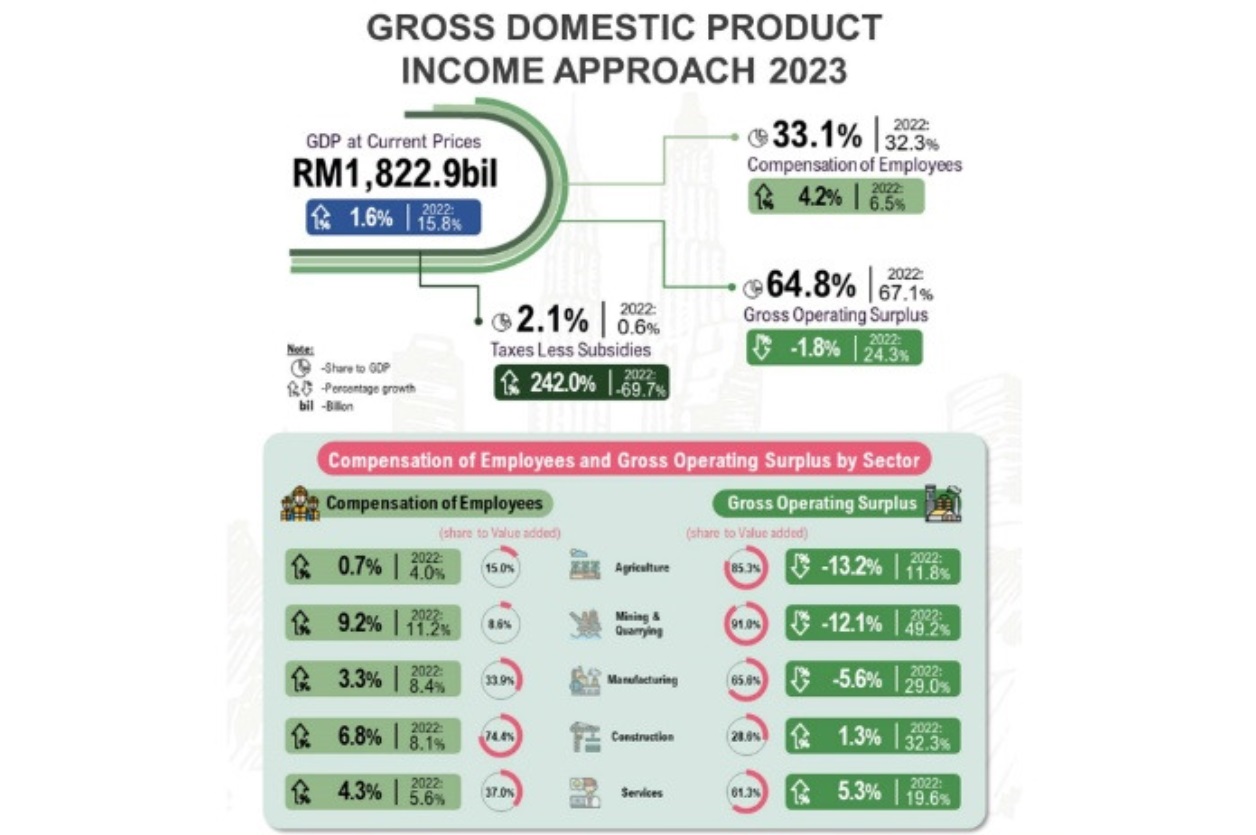KUALA LUMPUR: Malaysia’s 2023 nominal gross domestic product (GDP) amounted to RM1.8 trillion, with growth moderated to 1.6% from the double-digit 15.9% in 2022.
In a statement, Department of Statistics Malaysia (DOSM) Chief Statistician Datuk Seri Dr Mohd Uzir Mahidin said that despite the moderated performance, the economy remained resilient, particularly through private final consumption expenditure, which increased 6.7%.

“The growth was propelled by ongoing enhancement in employment and wage through the implementation of a new minimum wage of RM1,500 starting May 2023,” he said.
The income statistics from economic production include 3 key components, namely compensation of employees (CE), gross operating surplus (GOS) and taxes less subsidies on production and imports (net taxes).
Given the improvements in the labour market, Mohd Uzir said CE recorded a steady growth of 4.2% while GOS declined by 1.8%, while the performance of the income distribution showed a shift towards a better share of CE at 33.1% compared to 32.3% in 2022.
“Nevertheless, GOS still contributed substantially to the GDP at 64.8%, although 2.3% lower than the previous year. The remaining component was net taxes, which accounted for 2.1%,” he said.
Looking at detailed sectoral performance, he said the increase in the CE component, encompassing the remuneration received by employees for their labour was driven by the services, manufacturing and construction sectors.
“CE in the Services sector grew 4.3% supported by growth in all sub-sectors, particularly wholesale and retail trade, food and beverages and accommodation.
“As for the manufacturing sector, CE registered 3.3% growth led by the moderation in electrical, electronic and optical products,” he said.
Mohd Uzir added that the decline in GOS was primarily influenced by the sharp downturn in the mining and quarrying (-12.1%), agriculture (13.2%) and manufacturing (-5.6%) sectors.
“The fall of commodity prices in 2023 has lowered profitability across these sectors, leading to a marked decrease in overall GOS. Nevertheless, the contraction was partially alleviated by the growth in the services and construction sectors at 5.3% and 1.3%, respectively,” he said.
Net taxes showed a remarkable growth of 242% or RM37.7% in 2023, attributed to the higher taxation revenue as compared to a decrease in subsidies.
In the context of international comparison, Mohd Uzir said the composition of the CE in the Southeast Asia region is notably lower, accounting for less than 40% of GDP while GOS makes up a larger share.
“As opposed to advanced economies such as United States, Germany and Canada, CE constitutes a greater share than GOS at 53.1%, 52.4% and 51.1%, respectively.
“Net taxes formed a smaller share of GDP in the selected countries, with Malaysia recording the lowest contribution of 2.1%, reflecting the differences of fiscal policy among countries,” he said.
— BERNAMA





